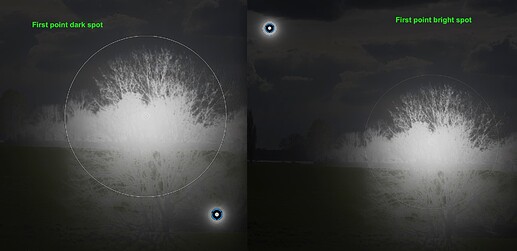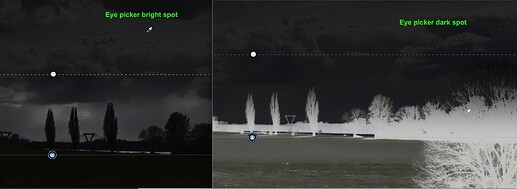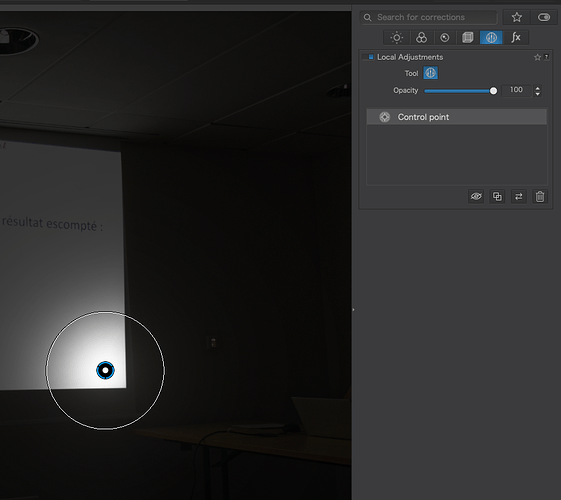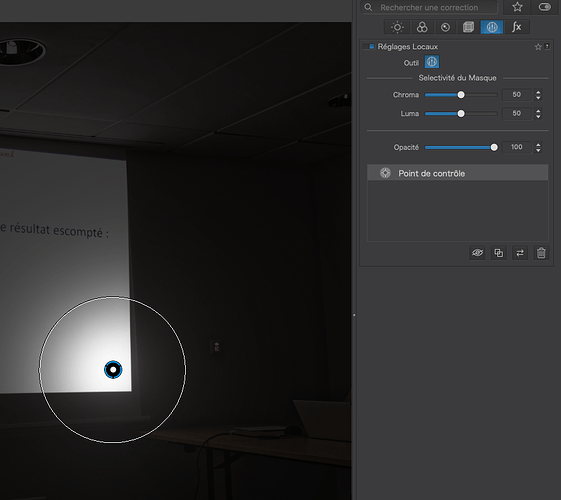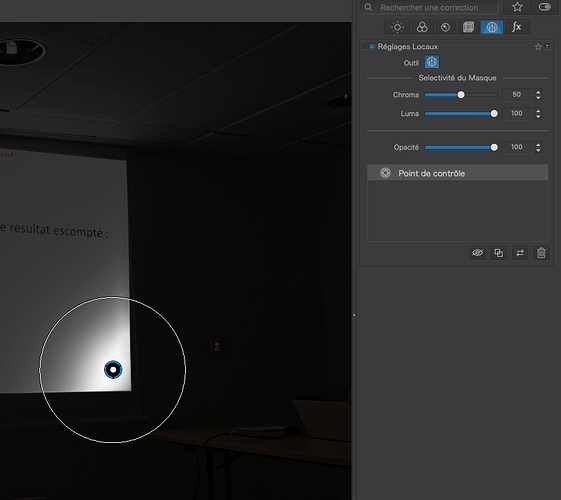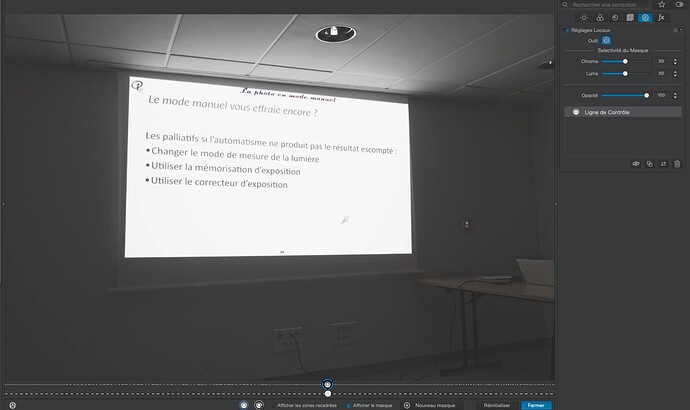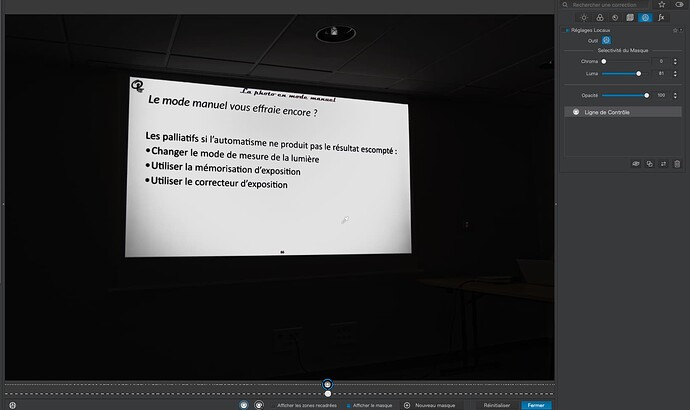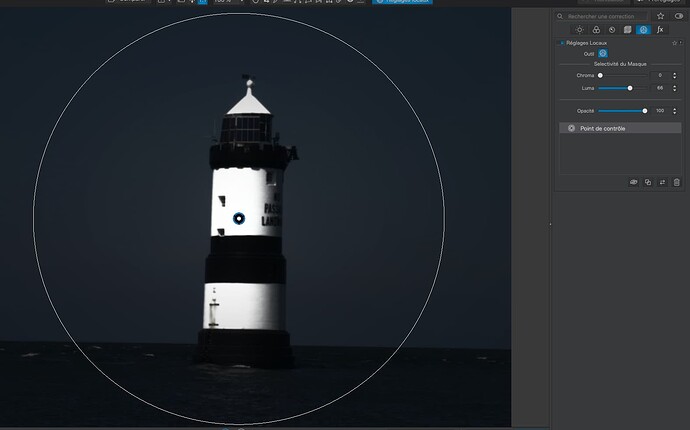Hope this helps to describe
I vote for, of course!
Ah, yes! I didn’t see what you were talking about with the selectivity sliders. I use them occasionally.
But I think that to be able to modify also the shape of the control point would be an improvement.
et si jamais, je suis francophone… ![]()
If I can clarify…
The shape of a Control Point might appear to be circular but that is not the shape of the masked area, which is determined by the selectivity sliders.
The purpose of a Control Point is not to select a circular, elliptical, square, or any other regular shape, it is to provide an anchor or selection point for a bunch of pixels that have the same tonality and coloration.
Prior to PL5, all you could do was place a Control Point and it, sort of, vaguely, gave you a soft circular area that was hard to control and needed copious supplementary positive and negative points in order to try and control what was selected. But although whatever was selected was meant to be based on the tonality and colour of where the centre was placed, it usually ended up selecting far more than was required, hence the need for negative points to limit that selection.
With PL5, DxO introduced the idea of Selectivity. This now meant you could determine what tonality or colour was selected, based on the content behind the selection point.
Take this screenshot from PL4…
… and compare it with one from PL6 (with the default 50 / 50 selectivities)…
You can see that the mask is almost exactly the same. Circular but vague, including a lot of the image outside of the circle.
Now, take this screenshot from PL6, with the selectivity sliders adjusted…
See how the selected area is much smaller and limited, almost completely, to within the circle, at least within the projection screen area.
This is because the PL6 Control Point is restricting the selection to only those tones similar to those under the selection point, not just to a circular area that includes that point.
So now, in this case, you have a soft triangular mask that is just going to affect the corner of the screen.
The Control Line takes this same principle a step further…
By placing a Control Line, which does not determine the source tonality, outside of the image area, the entire image is covered, without any graduation, and I can place the pipette on the projection screen to make that the point of selection…
This gives us a sort of 50% selected mask, which will affect the entire image to some extent.
However, if I fine tune the mask selectivity…
… now I get a mask that is so strictly limited to the tonality of the screen that even the writing is excluded from being modified. You can even see that the screen was not uniformly lit by the projector.
So, pre-PL5, Control Points used to be based solely on anything with a circular area that vaguely matched the tonality under the centre point, spilling outside the circle as it graduated away.
From PL5 onwards, this behaviour is changed, so that the selection is still based on the centre point but can be refined to a much more limited range of tonality and colour. The selection is no longer applicable to the circular shape, but can be limited to the tonality of any object(s) within the circle that has the same tonality as the centre point, depending on the selectivity sliders.
The form of a Control Point is, therefore, no longer limited to a soft circle but to the shape of whatever, but only, matches the selection point.
Finally, here’s an example of one Control Point covering more than one area of the same tonality but affecting both…
Clear! Thanks.
Thank you Joanna, this is clear for me now.
